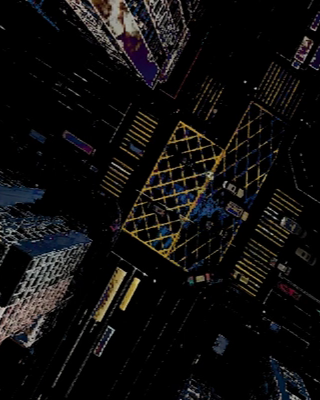Interview with Naz Yigiter by Ashley-C. Twumasi
Published on 2 JUL 2025.
Can you briefly introduce yourself and tell us something about your artistic background?
I’m Naz Yigiter, a media artist from Istanbul, currently based in Berlin. My path started with a strong connection to art and culture from an early age, which gradually led me to explore different creative disciplines. Over time, I moved from architectural studies into media arts, focusing on themes that important for my self expression. My work often combines visual storytelling, spatial composition, and sensory experience to create environments that invite reflection and a sense of shared presence.
What themes or questions do you generally deal with in your artistic work?
In my artistic work, I often explore themes of belonging, memory, and existence. Visual storytelling is a key part of my practice, helping me translate my own ongoing process of self-exploration and transformation into works that build a strong conceptual infrastructure. I’m interested in how individual and collective experiences shape our sense of connection, and in the subtle ways that moments of closeness and distance reveal hidden emotional and cultural layers. My work aims to create spaces for reflection, highlighting the often-overlooked ways we relate to one another and to our surroundings.
What attracted you to take part in the FOOTNOTES project?
The FOOTNOTES project resonated with a way of seeing that has become important in my life and practice. Over the past few years, l’ve been paying more attention to the unnoticed parts of the city and to moments that don’t make it into the bigger stories but feel meaningful in their own quiet way. This shift in perspective has helped me grow personally and shaped how I build the conceptual foundations of my work. I was excited by the possibility of sharing these observations and to be part of a project that creates space for those small moments and invites new ways of thinking about what we see and how we live together.
What is your contribution to FOOTNOTES?
I’m contributing with a video installation that focuses on the intersections of daily urban life places like traffic lights, pedestrian crossings, and junctions where people, vehicles, and signs come together. I wanted to draw attention to how these everyday sites create a layered visual and social texture that we often rush past without noticing.
How did you approach the topic of “FOOTNOTES” and how does your work relate to it?
The theme in my work draws from observing how intersections hold small, fleeting moments that hint at the deeper rhythms of the city. Rather than focusing on the obvious or spectacular, I see these ordinary flows as subtle but meaningful footnotes to the broader story of urban life, suggesting that even familiar spaces can hold opportunities for reflection and unexpected connection.
How do your digitally generated visuals—such as glitches, distortions, or abstract textures shape the way we perceive urban life in your work?
In my work, digitally generated visuals like glitches, distortions, and abstract textures are not just aesthetic choices—they mirror how I notice the city itself: full of interruptions, moments of friction and unexpected beauty. These techniques let me capture the energy of places where people cross paths but remain strangers, or where the environment itself seems to vibrate with urgency. They become a way of translating the fast, chaotic, and sometimes alienating feeling of urban life into something that feels tactile, layered, and open to interpretation.
